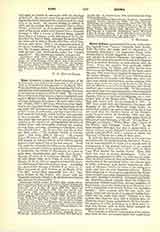

Kino, EUSEBIUS, a famous Jesuit missionary of the seventeenth and eighteenth centuries; b. August 10, 1644, in Welschtirol (Anauniensis); d. March 15, 1711. Kuhn (his German name; Kino representing the Italian and Spanish form) entered the Upper German Province of the Society of Jesus on November 20, 1665. He was professor of mathematics for some years at Ingolstadt, and went to Mexico in 1680. There he founded the mission of Lower California (Clavigero, “Historia della California“, Venice, 1787, I, 163 sqq.), the mission first beginning to develop when Father Kino, who had been working since 1687 in Sonora, crossed the Rio Colorado on a bold voyage of exploration, and discovered the overland route to California, which he thus demonstrated to be a peninsula. We owe our first exact information about this vast and at that time almost unknown country to the reports and cartographical sketches of Father Kino, who thoroughly explored the country several times, covering, according to Clavigero, more than 20,000 miles. On his apostolic activity in Sonora, Shea writes (“The Catholic Church in Colonial Days”, New York, 1886, p. 526 sq.): “He entered Upper Pimeria, 13 Mari, 1687, and established his first mission at Nuestra Senora de los Dolores, having gained a chief named Coxi as his first convert. From this point he extended his influence in all directions, evincing wonderful ability in gaining the Indians, and in presenting the truths of Christianity in a way to meet their comprehension and reach their hearts.” Venegas (Noticia de la California, Madrid, 1757, II, 88) and Alegre (Hist. de la Comp. de Jesus en Nueva Espana, II, 54 sq., 155 sq.) speak in terms of the greatest admiration of this extraordinary man. According to a manuscript account of Father P. A. Benz, S.J., Kino was shot by rebel Indians on March 15, 1711. “No life”, writes Shea regretfully (loc. cit.), “has been written of this Father, who stands with the Venerable Anthony Margil as the greatest missionaries who labored in this country”.
A. HUONDER

